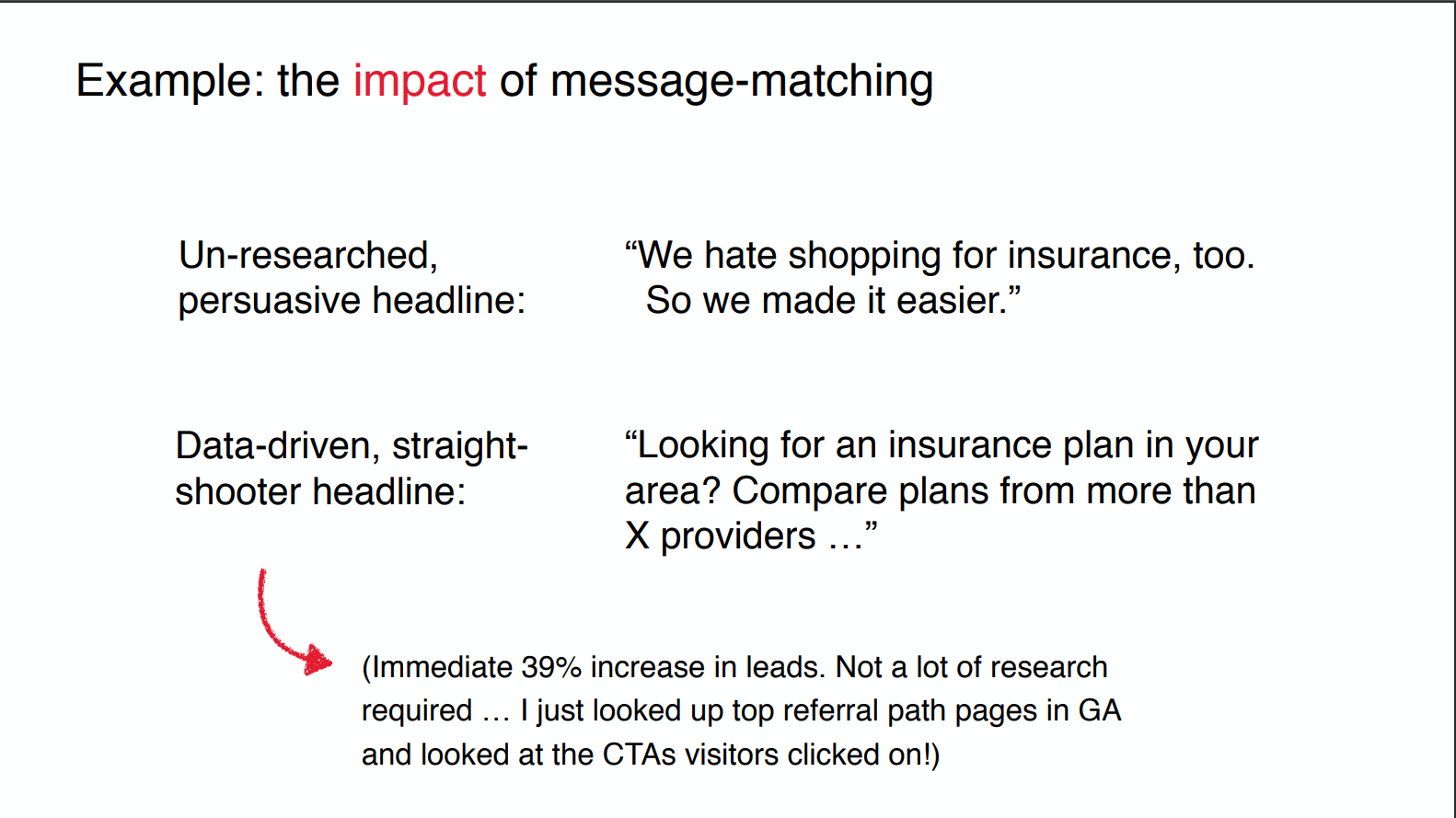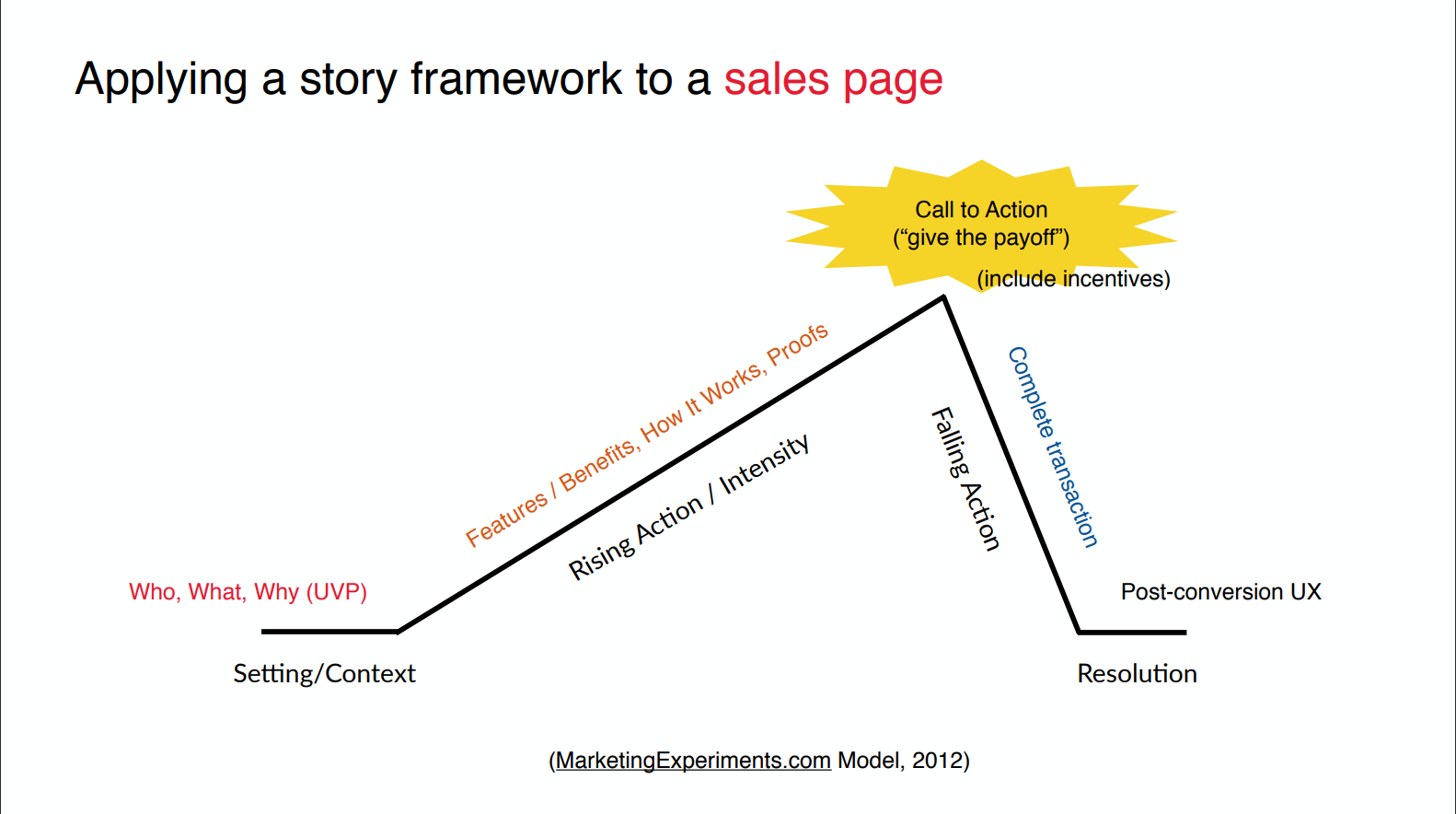In this article, we will focus on editing & punching up the sales copy.
Before we dive deeper into messaging, I would like to mention that the following content is based upon my learning during the eleventh Week of Conversion Optimization, my mini degree course at CXL Institute, led by Peep Laja & the team.
Make your sales copy (whether data-driven or not) SIGNIFICANTLY BETTER by following a few simple, conversion-focused editing principles.
Momoko’s 7 Simple Rules of Effective Sales Copy Editing
Rule #1: Above all, be CLEAR. (Even explicit.)
“Clarity Trumps Persuasion”
“While marketers invest the majority of their time and budgets on complex areas deeper down in the funnel, research has found that most of the gain from optimizing a website occurs in clarifying the first seven seconds of users’ experience.” – MarketingExperiments.com
Takeaway
If you don’t say it, your reader won’t see it.
Your reader can’t read your mind. Put it on the page.
Tell your reader what they need to know.
Rule #2: Match The Reader’s Mindset.
A well-researched, message-matched headline will often outperform an un-researched “persuasive-trick” headline.
Handy Headline Trick
- Message-match with a question
- Answer with a specific unique value

Rule #3: BLOW Them Away With Value
How? Easy! Just make an exhaustive list of:
- Specific, happy outcomes
- Elimination of specific pain points
And then prove it, with hard data & rich testimonials.
Rule #4: Use quantifiable proof, if possible
“Platitudes and generalities roll off the human understanding like water from a duck. They leave no impression whatsoever…. People recognize a certain license in selling talk as they do in poetry. A man may say, “Supreme in quality” without seeming like a liar, though one may know that other brands are equally as good … But just for that reason, general statements count for little. And a man inclined to superlatives must expect that his every statement will be taken with some caution.… But a man who makes a specific claim is either telling the truth or a LIE.
People don’t expect the advertiser to LIE.” – Claude C. Hopkins
Rule #5: Don’t just talk … Paint a picture!
Five “paintbrushes” you can use …
#1: Lift “word pictures” from customers.
#2: Replace general nouns with specific ones.
#3: Replace generic adjectives with vivid ones.
#4: Replace weak verbs with punchy ones.
#5: Call out your reader and their needs!
Rule #6: Show AND tell generously.
The classic fiction-writing rule of “show, don’t tell” is risky for sales copy, because it’s often implicit, not explicit.
Online sales copy cannot afford to be implicit (i.e. subtle) because people need to get your point to convert/act.
So show AND tell — i.e. use imagery, but call out what people should notice with annotations & added copy.
Rule #7: Cut anything that’s not doing real work.
… Is it reflecting/matching motivation?
… Is it conveying or clarifying value?
… Is it proving a claim?
… Is it addressing anxiety?
… Is it adding authentic specificity?
NO? KILL IT.
Summary
Follow these seven rules:
#1: Above all, be CLEAR. (Even explicit.)
#2: Match the reader’s mindset.
#3: BLOW them away with value.
#4: Use quantifiable proof
#5: Don’t just talk … Paint a picture!
#6: Show AND tell generously.
#7: Cut anything that’s not doing real work.
Try It Yourself
Apply the Seven Rules of Sales Copy Editing to a draft of your own page copy. You can try to do the following (per ~400 words of copy):
- Add 3-5 word pictures.
- Replace 3 dull adjectives with 3 vivid adjectives.
- Change 3 weak verbs with 3 punchy ones.
- Identify a claim you’ve made about your product, and brainstorm ways you can prove it (with testimonials, data, press quotes, etc).
- Do your best to cut your word count by 30-50% without losing any critical information. (This might not be possible, but try!)
Learn more about message hierarchies.



